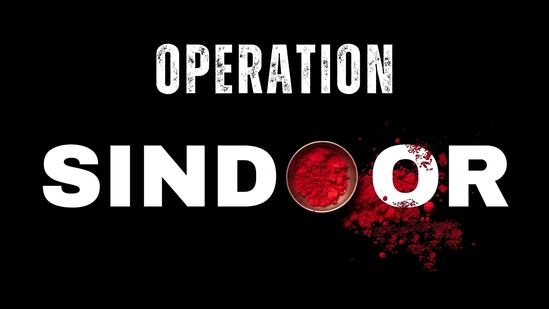New Delhi, May 7, 2025 — With a thunderous yet methodically veiled execution of strategic prowess, India unveiled “Operation Sindoor” on May 6, 2025—an audacious, meticulously orchestrated counterstrike that pierced the sinews of terrorism embedded deep within Pakistani terrain and the tumultuous expanse of Pakistan-occupied Kashmir (Pok). This epochal intervention wasn’t merely military choreography; it was India’s visceral proclamation of zero tolerance to barbarism and a thunderclap to international observers of its unflinching resolve.
Catalyst: Bloodshed in Pahalgam
This retaliatory inferno was ignited by an atrocity etched in national anguish. On April 22, a ghastly terror onslaught extinguished 26 innocent lives, predominantly Hindu pilgrims traversing the hallowed lands of Pahalgam. The brutality was not just carnage; it was sacrilege. The ensuing days were a maelstrom of grief, morphing swiftly into collective determination. What rose from the ashes was not just Operation Sindoor—an elegy sculpted in precision, a dirge transformed into deterrence.
Sindoor: A Name Laden with Gravitas
The mission’s nomenclature, “Sindoor,” was steeped in potent symbolism. This vermilion pigment, sanctified in Hindu tradition and synonymous with matrimonial sanctity, now bore a tragic undertone, commemorating the widowed, the broken, and the bereft. This christening wasn’t incidental—it echoed a nation’s mourning and transmuted cultural iconography into a banner of vengeance and unity.
Behind the Veil: The Silent Conspiracy of Strategy
Following the massacre, India’s intelligence matrix surged into silent overdrive. Espionage vectors spanning satellites, cyber eavesdropping, and clandestine human intel interlocked to unmask the orchestrators—those spectral hands behind the bloodletting. Threads traced back unequivocally to two malignant entities: Jaish-e-Mohammed and Lashkar-e-Taiba, operating with shadowy impunity under state-enshrouded guardianship in Pakistan and Pok.
In these covert enclaves—training bastions, armament vaults, and operational lairs—the seeds of terror had festered. With exactitude bordering on the surgical, India’s strategic apparatus coalesced its tri-services and RAW, synthesising months of preparation into a blitzkrieg formula within mere days, ensuring discretion reigned until the final exhale of impact.
The Assault: Thunder Before Dawn
As the twilight surrendered to dawn on May 6, precisely at 3:28 AM, the skies bore witness to retribution draped in silence. Indian jets—spectres of vengeance—launched orchestrated strikes on nine infernal breeding grounds of terror, from Bahawalpur and Muridke in Pakistan to Muzaffarabad and Kotli in Pok. These coordinates, long steeped in malevolence, had evaded justice under the veil of geopolitical hesitancy. No longer.
The Rafale squadrons, armed with SCALP missiles and the laser-guided wrath of AASM Hammers, delivered precision from afar, never violating sovereign thresholds—dancing at the edge of provocation while scripting destruction with celestial detachment.
Simultaneously, India’s naval phalanx prowled the Arabian abyss, while terrestrial units girded strategic borders. Submarines slithered unseen, radars pulsed with vigilance, and UAVs painted the sky with surveillance, ready to intercept any echo of reprisal.
Surgical Strikes on Terror’s Lifeblood
These weren’t haphazard detonations. Each of the nine loci was a vital nexus—nerve centres pulsing with extremist logistics. Bahawalpur, the ideological forge of Jaish-e-Mohammed, absorbed the heaviest rain of fire. Muridke, Lashkar-e-Taiba’s putrid nucleus, crumbled beneath calibrated force.
In Pok, Muzaffarabad and Kotli, long known as gestation grounds for infiltration, found their command arteries severed. Civilians reported incandescent eruptions slicing through darkness, as entire compounds collapsed into skeletal remnants. The speed and precision sowed pandemonium among local governance, caught flatfooted amid their clandestine complicity.
A Nation Rallies: From Grief to Grit
Back home, reverberations of Operation Sindoor sparked waves of exultation intertwined with solemn pride. Prime Minister Modi, ensconced in a secure military sanctum, oversaw the mission’s execution with his cadre of defence sages. Within hours, the government articulated its posture—stern, unmoved, and justified in retribution.
Global diplomats were briefed, and dossiers unveiled. The offensive, they were told, was not mere reprisal but a scalpel against metastasising extremism. Political rivals, often fractious and divided, presented a rare monolith of support, their voices united in lauding the operation’s finesse and restraint.
The bereaved of Pahalgam—wounded souls yet unhealed—found momentary solace. Their agony, immortalised in national conscience, was now reflected in valorous action. Their tears found resonance in the sonic booms over enemy skies.
Islamabad: The Chorus of Denial
Pakistan, as foreseen, erupted in theatrical condemnation. The National Security Council was convened in frantic urgency. Its rhetoric was predictable—denouncements of aggression, flailing threats of reprisal, and denial of any damage. Yet, as whispers emerged from trauma-stricken localities and overburdened hospitals, the truth bled through the official smokescreen.
While Pakistan’s military claimed retaliatory successes, international radar logs and strategic analysts found no corroboration. India had struck, vanished, and left no trace for their retaliation to trace.
Global powers, wary of escalation yet cognizant of India’s right to shield its sovereignty, offered tempered reactions. Behind closed doors, however, whispers of admiration circulated for the operation’s surgical restraint and geopolitical choreography.
Doctrine Reforged: From Shield to Spear
Operation Sindoor wasn’t just punitive—it was pedagogical. It signalled a doctrinal metamorphosis. India, no longer content to react, now charts preemptive arcs of precision. The old playbook of mass mobilisation has ceded ground to hybrid warfare—synthesising intelligence, surgical firepower, and digital diplomacy.
This measured ferocity, executed beneath the nuclear shadow, was a masterclass in brinkmanship—a calibrated inferno that avoided mushroom clouds.
Civil Ripples and Homeland Fortification
Across India, streets pulsated with patriotic fervour. From city plazas to rural courtyards, candles flickered in solemn unity, while social media transformed into a tapestry of national homage. Tricolour motifs adorned profile pictures, and virtual war cries echoed louder than ever.
Operationally, the government locked down vulnerable air corridors—shuttering Srinagar, Amritsar, Jammu, and beyond to shield civilian transit. Urban hubs simulated emergency protocols, while religious and governmental edifices braced under heightened security. The nation stood ready, not out of fear, but preparation.
The Global Prism: Caution and Applause
From Washington to Tel Aviv, from Paris to Canberra, the choreography of Operation Sindoor was dissected and, in muted tones, admired. Select intelligence allies were allegedly given silent forewarnings, a nod to India’s strategic maturity.
The United Nations tiptoed around censure, calling instead for calm—a silent acknowledgement of India’s defensive righteousness. China and Russia, ever enigmatic in South Asian affairs, issued circumspect observations, preserving their strategic equities.
The act has resuscitated international discourse on cross-border terrorism, rekindling dormant conversations on sanctions, accountability, and collective security blueprints.
On the Precipice: What Tomorrow May Hold
The reverberations of Sindoor will echo far beyond the charred ruins of its targets. Pakistan now straddles a forked path—retaliate in shadows or posture in public. Either path could reshape subcontinental geopolitics.
India, meanwhile, has spoken in the dialect of deterrence and awaits the world’s reckoning. The ruling dispensation, buttressed by public solidarity and strategic triumph, stands emboldened. The armed forces, now avatars of calculated wrath, have redrawn the contours of counterterrorism.
Operation Sindoor, then, is not merely a mission. It is a requiem sung with missiles and a vow etched in vermilion—a proclamation that India shall no longer fold beneath the weight of grief but will rise, roaring, through the fire.
In the annals of its collective psyche, Sindoor is now no longer just a symbol of conjugal piety—it is the scarlet crest of national defiance, a colour not of submission, but of sacrifice and sovereignty.
Also Read: Rajkot City News Update: Stay Ahead with Latest Information



